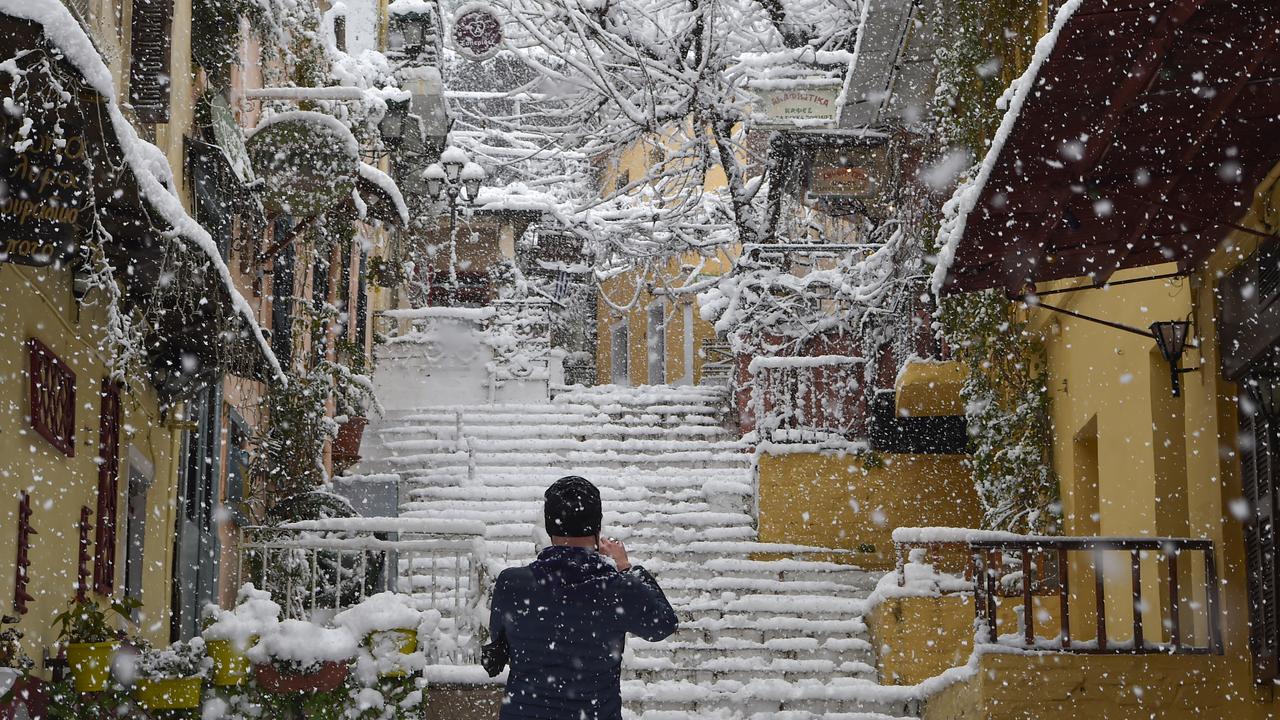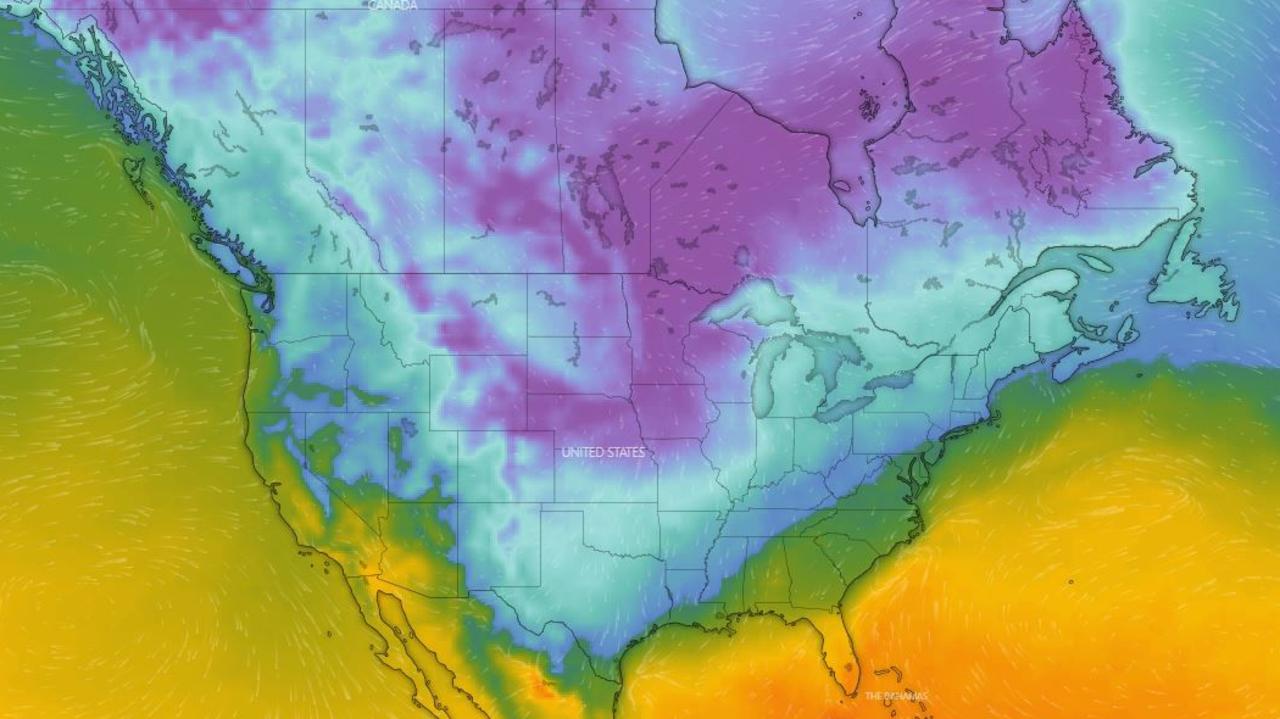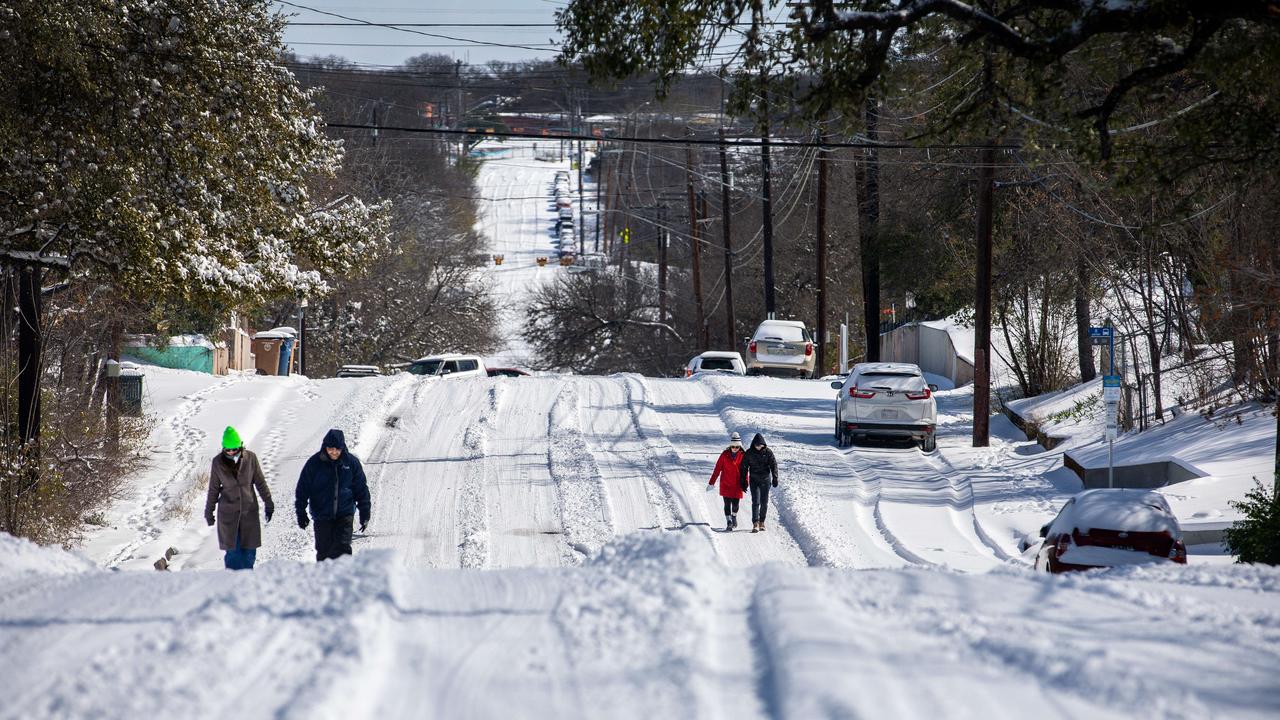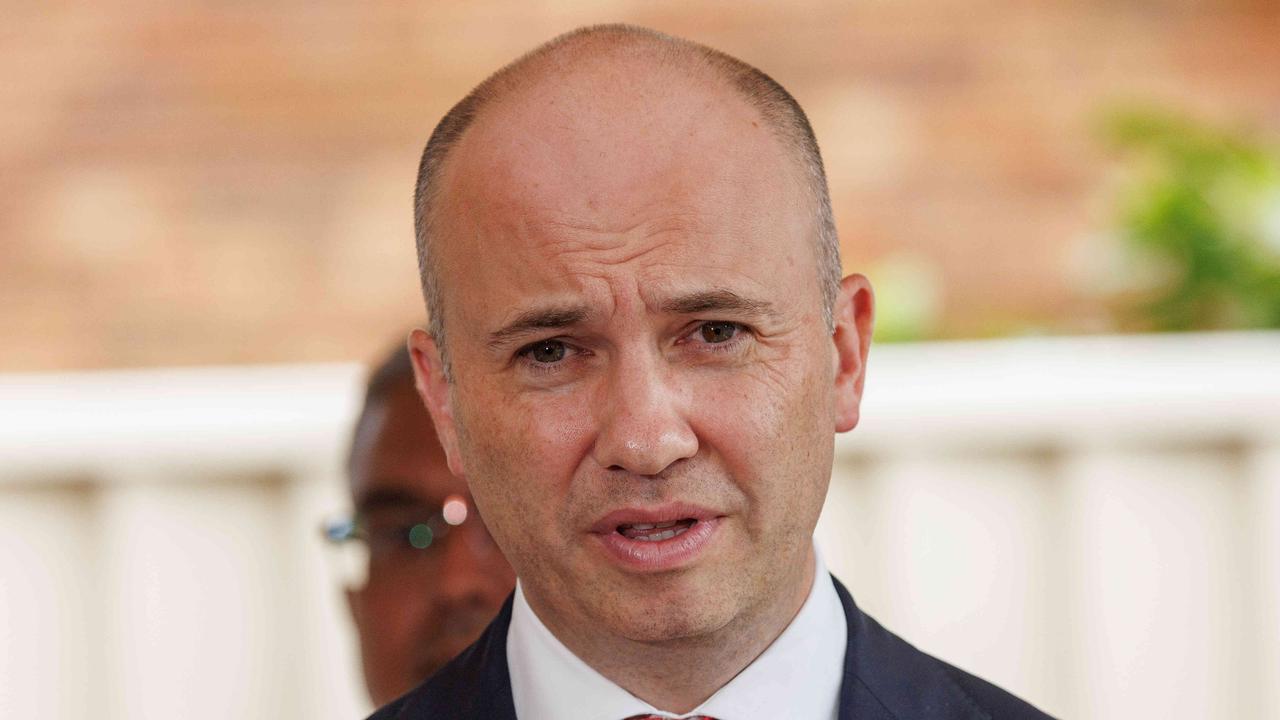World’s upside down weather causing chaos
A “wobble” in one of the world’s vital weather engines has lead to chaos and deaths, with snow in places it’s rarely seen and -12C temperatures in Texas.
A “wobble” in the weather has turned a chunk of the world’s climate upside down, leading to the bizarre situation where it is twice as cold in Texas as it is in Alaska.
Meanwhile in Europe, snow has covered Athens’ world famous Parthenon as temperatures sank to freezing on Tuesday. The Greek capital can usually be relied upon for mild winters, yet in the country’s north the mercury hit -20C in places.
North America is being gripped by a weather crisis as a huge lick of freezing polar air descends south, even bringing snow to northern Mexico.
A temperature anomaly map of the continent from the University of Maine’s Climate Change Institute has vividly revealed the peculiar situation.
Temperatures on February 15 were more than 20C below average throughout Texas, while Greenland and the North Pole are, in parts, 10C above average.
However, far from being a sign climate change is all a lot of hot air, weather watchers have said the current conditions are being caused by the abnormally warm temperatures in the Arctic.
RELATED: Wet Aussie summer set to continue

More than 20 people have now died during the cold snap, mostly in car accidents in states including Texas, Kentucky and Missouri, reported news agency AFP.
In hardest-hit Texas, where freezing conditions prompted energy companies to implement rotating blackouts, a woman and girl died from carbon monoxide poisoning after using a car to generate heat, according to NBC News.
In Houston on Monday, a homeless man was killed “possibly from exposure”, according to local police. A man in Louisiana died when he hit his head after slipping on ice, and a 10-year-old Tennessee boy died after he and his six-year-old sister fell through the ice into a pond on Sunday.
President Joe Biden on Tuesday vowed to provide additional emergency resources for those affected by the “historic storm.” He also thanked “road workers, highway patrol officers, and first responders who are taking swift action in horrific conditions to save lives,” according to a White House statement.
RELATED: Australia’s weird weather baffling scientists


POLAR VORTEX ‘WOBBLE’
Texas’ capital Austin saw its temperature dip to -12C, in a city where usual February lows bottom out around 7C above freezing. Anchorage, the capital of Alaska, was balmy in comparison, dropping to a mere -6C.
The US’ National Oceanic and Atmospheric Administration (NOAA) predicted much of the bone-chilling conditions earlier this month.
It put the blisteringly cold weather down to three events. There is the La Nina climate driver, which has also led to a wet winter for Australia’s east coast. Added to that is atmospheric conditions that are perfect for allowing cold air to seep south and the third was a weakening polar vortex.
“These three reasons are not independent. Instead, each are interacting and influencing each other like three different coloured food dyes swirling in a glass of water,” said NOAA.
Scientists at Melbourne’s Monash Climate Change Communication Research Hub (MCCCRH) said the polar vortex was the most fundamental cause.
“The polar vortex is a large area of low pressure and cold air over the North Pole,” the MCCCRH said in a report for news.com.au on the US conditions.
“It is related to the jet stream, which is a powerful band of wind transporting moisture and moving masses of cold and warm air and storm systems along its path.
“When the jet stream weakens, it becomes ‘wavier’ and allows very cold air to protrude southward in places while warmer air pushes northward elsewhere.”

This “wobble” in the jet stream is due to changing temperatures in the Arctic, the report stated.
Usually, temperatures at the North Pole are far, far colder than those in Texas. This is no surprise.
It’s this contrast that keeps the jet stream chugging along quite cleanly around North America, northern Europe and Asia. But when that contrast in temperatures between the poles and the mid latitudes lessens, as it is doing, the jet stream weakens and begins to go off kilter.
“The Arctic region is warming faster than the rest of the globe, and research suggests that this warming is weakening the jet stream, causing it to meander further north and south and release the frigid air well away from the pole.
“‘Wobbles’ in the polar vortex can bring much colder than normal air to Europe, Asia, and the US,” said the MCCCRH.
A surge of sudden warming hit the polar stratosphere (the zone 10 to 50km above the surface of the planet) and this was probably the trigger for the polar vortex and the jet stream to weaken.
“While we’re seeing a clear warming trend across the globe, local weather systems vary in different places and at different times of the year,” said Monash’s Dr James Goldie.

FREEZING CAUSED BY WARMING
However, while all the talk may be of freezing temperatures in Texas, it could have been a whole lot colder.
Climate Central is a US based climate science information service. It looked at the annual lowest temperatures in 244 places in the US – including Texas – and found that 98 per cent had recorded a rise in their annual coldest temperatures.
For instance, Minneapolis’ lowest average temperatures in the early 1970s was around -32C. But by the late 2010s, -26C was a much more usual coldest temperature.
In Austin, Texas, the mercury half a century ago used to sink 13 degrees lower at the coldest time on the coldest day of the year than it does now.
“Yes, this polar outbreak is extreme, bitterly cold, and breaking records,” Climate Central’s chief meteorologist Bernadette Woods Placky told news.com.au.
“But what we found was, while many of these temperatures are still cold, the cold is just not as cold as it used to be – both in intensity and frequency.
“Plus, the record high temperatures being set in the US are still far outpacing record cold temperatures.”




